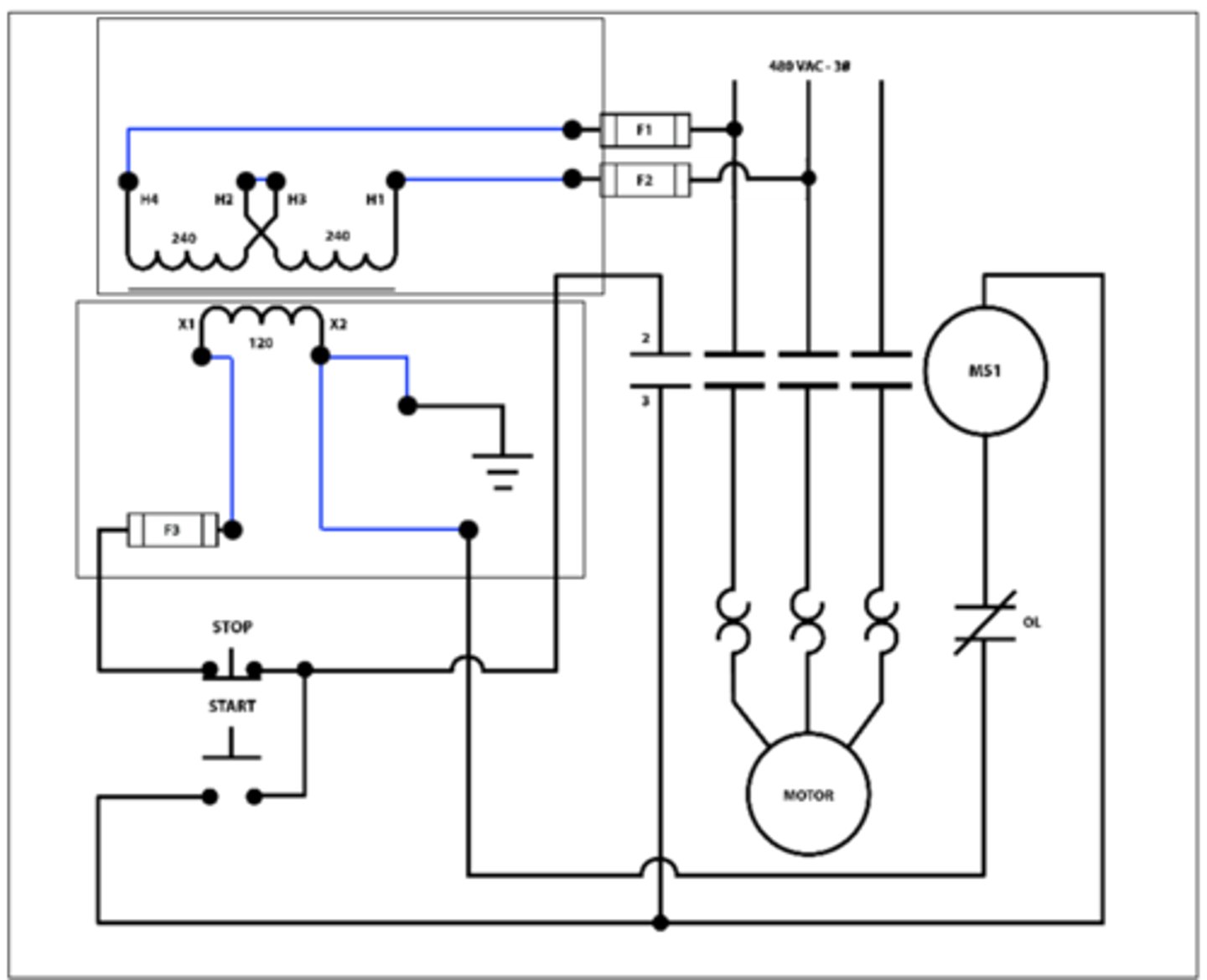Motor Control, Level I, Lesson 5 - Control Transformers
1/17
There's no tags or description
Looks like no tags are added yet.
Name | Mastery | Learn | Test | Matching | Spaced |
|---|
No study sessions yet.
18 Terms
True
When the terminals of a control transformer have to be linked by wire, the manufacture-recommended wire types and sizes should be used.
series / parallel
When connecting a control transformer with dual windings in both primary and secondary coils, to step down from 480 V AC to 120 V AC, the primary windings are connected in ? and the secondary windings are connected in ? .
a. parallel / parallel
b. parallel / series
c. series / parallel
d. series / series
volt-amperes (VA)
Control transformers are rated in ? .
a. kilovolt-amperes (kVA)
b. kilowatts (kW)
c. volt-amperes (VA)
d. watts (W)
120 VAC / 24 VAC
Generally, control transformers step down the main line voltage to a control voltage of ? or ? .
a. 120 VAC / 24 VAC
b. 120 VAC / 48 VAC
c. 208 VAC / 120 VAC
d. 240 VAC / 120 VAC
False
The wiring terminals of a control transformer are connected with a metal clip to minimize the chatter.
inrush current
The high current called ? occurs when power is applied to magnetic devices.
steady-state current
The sealed current called ? implies that relays and solenoids are pulled in.
85%
The NEMA standard specifies that AC magnetic motor starting devices must function at voltages as low as ? of the rated coil voltage.
a. 50%
b. 75%
c.85%
d.90%
overload
A(n) ? is any current flow in the normal current path that is higher than the circuit’s normal full load current.
short circuit
A(n) ? is an overcurrent condition that leaves the normal current path and greatly exceeds the normal full load current of the circuit.
secondary / primary
Some industrial applications require fuse protection on one ? line and in both ? lines.
National Electrical Code (NEC)
The use of fuses on the primary and secondary side of a control transformer is specified by the ? .
a. Institute of Electrical and Electronics Engineers (IEEE)
b. National Electrical Code (NEC)
c. National Electrical Manufacturers Association (NEMA)
d. National Electrical Safety Code (NESC)
50 V
AC circuits of ? or more must be grounded in accordance with the National Electrical Code® (NEC) Section 250.
a. 24 V
b. 50 V
c. 100 V
d. 150 V
NEC
Control transformer suppliers recommend fuse sizes based on the ? .
a. IEEE
b. NEC
c. NEMA
d. NESC
grounded
The ? system is the most common for industrial control applications.
True
When troubleshooting transformer failures, primary and secondary voltage measurements should be made in the no load condition and the full load condition.
See image
Drag and drop diagram elements to complete the following wiring diagram of the connections for the primary and the secondary of the control simulator. The control transformer is dual-rated 240/480-volt primary and 120-volt secondary winding. The source voltage is 480 volts AC, 3-phase.

See image
Drag and drop diagram elements to complete the following wiring diagram of the connections for the primary and the secondary of the control simulator. The control transformer is dual-rated 240/480-volt primary and 120-volt secondary winding. The source voltage is 240 volts AC, 3-phase.
